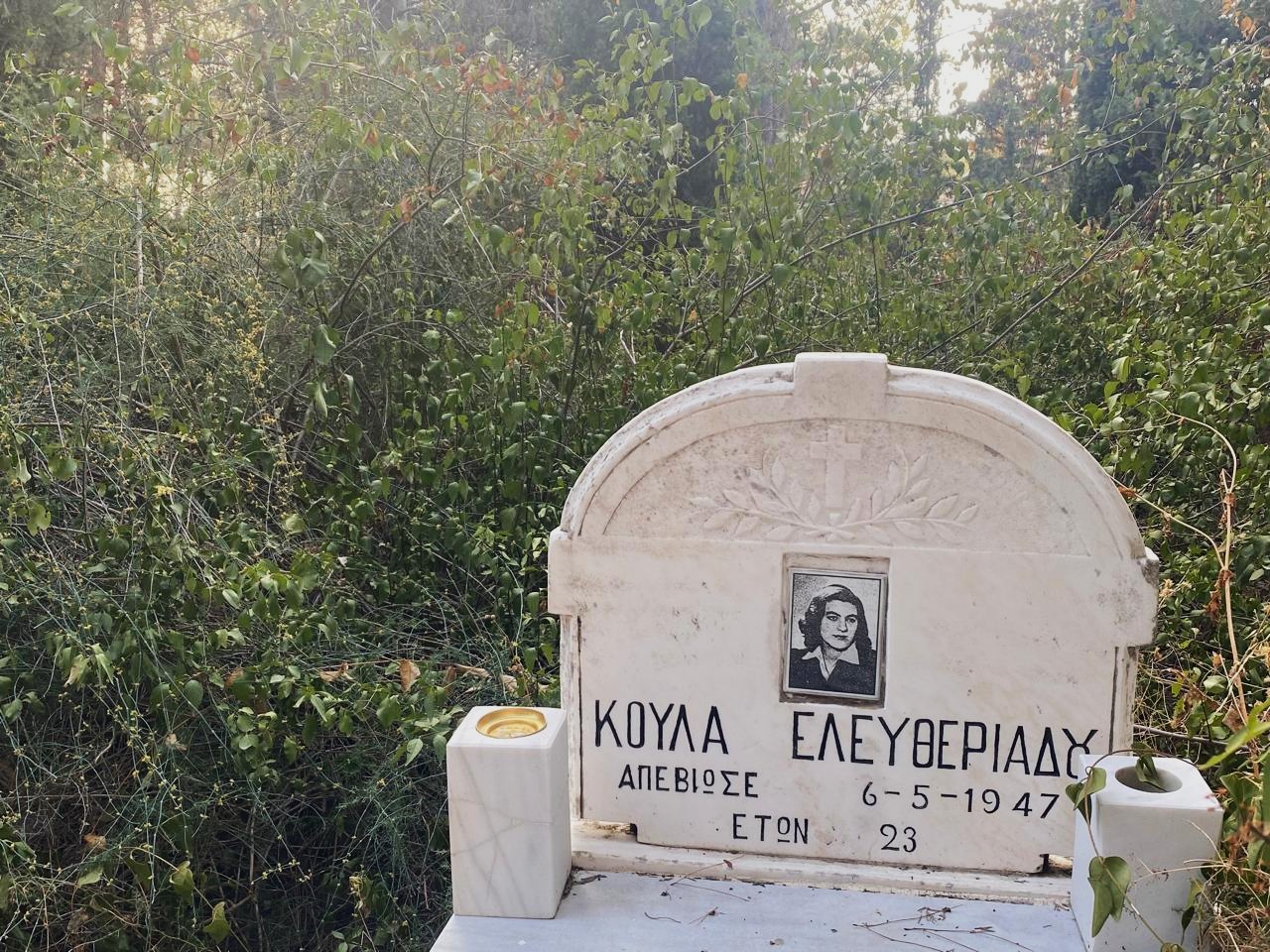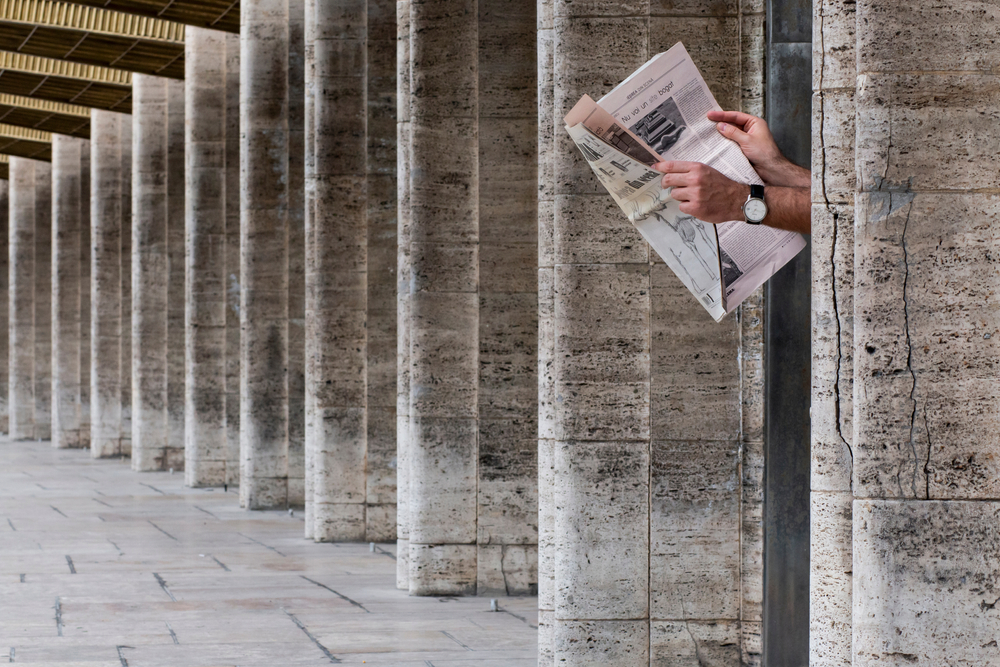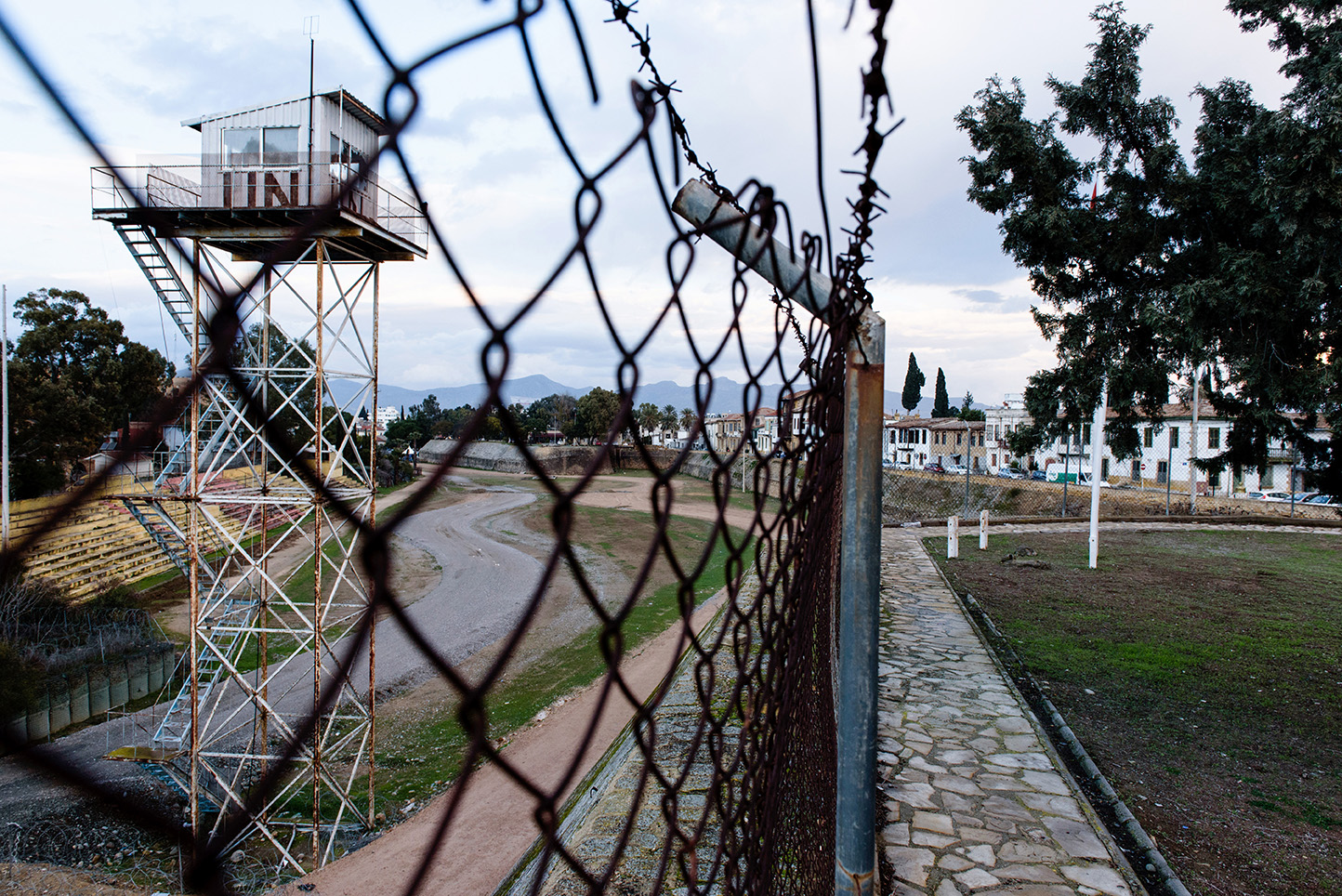A city of ghosts: unearthed graves in Thessaloniki
Thessaloniki has long skirted the uncomfortable truths of the Greek Civil War, leaving much of its violence unrecorded and its victims unhonored. The recent discovery of mass graves near Genti Koulé challenges both the city’s institutions and its citizens to confront a history that was deliberately buried

A-city-of-ghosts-unearthed-graves-in-Thessaloniki
Koula Eleftheriadou's grave - photo Mary Drosopoulos
It began as a summer project, nothing more than a mayor’s order to freshen up a neighborhood park. The Park of National Resistance in Sykíes is usually a park alive with children’s laughter and the easy rhythms of neighborhood life, a place where each October the city gathers to honor Thessaloniki’s liberation from Nazi rule. But when the soil was broken by the crews, the earth gave up a memory that refused to stay buried.
Just beyond the shadow of Genti Koulé, the notorious prison whose walls once swallowed cries that never reached the city below, workers struck upon mass graves. What emerged were not ancient relics, but skeletal remains of the disappeared: Victims of Greece’s Civil War, a chapter still smoldering in the national psyche.
By June 2025, the excavation had revealed at least six burial pits, containing the remains of over forty individuals. Many bore the small, unmistakable holes of execution-style gunshots. Among them was at least one woman, identified only by fragments of a shoe. The graves were shallow, hasty, and unmarked; mute witnesses to a fratricidal war that tore the country between 1946 and 1949, pitting former anti-Nazi resistance fighters against a royalist state backed first by Britain and later by the United States. Victory came to the government, but it left behind overflowing prisons, firing squads, and villages branded as traitors.
A mayor digs for truth
At the heart of this slow unearthing stands Simos Daniilidis, mayor of Neapoli–Sykiés for over three decades. A constant figure in local politics since the 1990s, Daniilidis is Greece’s longest-serving municipal leader – an administrator whose longevity has not dulled his insistence on memory.
It was under his orders that construction near Genti Koulé halted the moment human remains were spotted. While state archaeological services dismissed the bones as too recent to warrant their involvement, Daniilidis insisted that the municipality had a duty to confront what lay beneath. He coordinated local services to secure the graves, called in forensic experts, and issued a public appeal for families of the disappeared to come forward for DNA matching.
His commitment to unearthing the past is not new. A few streets from the burial site lies the Cultural Neighborhood of Neapoli–Sykies , a long-term project restoring refugee houses built by survivors of the Asia Minor Catastrophe. Schoolchildren visit to learn stories of uprooted families. Locals walk through open courtyards of shared history. “We don’t build with concrete alone,” Daniilidis once said; “we build with truth.”
Now, he plans to extend this vision to the park. He has announced intentions to establish a memorial at the site of the mass graves, ensuring that the city itself becomes a witness to what was once hidden.
Koula Eleftheriadou: a grave in the forest
By a quiet twist of fate, municipal councilor Eirini Kagiampini stumbled upon another grave while hiking near her neighborhood. The area was scattered with abandoned burial sites, long forgotten and weathered by time. Rusted crosses jutted from the earth like tattered flags, half-swallowed by brambles and weeds; a mute testimony to lives nearly erased.
Amid the decay, one grave stood apart. Hidden deep in the forest, it was almost reverent in its secrecy: intact, carefully preserved, as if someone had quietly guarded it through decades. It belonged to Koula Eleftheriadou , a 23-year-old whose life was cut short by the turmoil of her time. Etched into the stone is her own defiant testament:
"It is better that I die for my ideals, honestly, for the ideals of all workers. I am proud because I die within the lines of the heroic KKE."
Old newspapers remembered her as a “heroic EPON member”, a young resistance fighter whose courage became legend even as the years tried to bury her memory. The photograph on her grave shows her face, fierce and determined, gazing toward a future she would never see.
“When I saw the grave for the first time, I cried,” Kagiampini said, speaking to OBCT on the spot, surrounded by overgrown earth, the forest itself whispering the stories of those long buried. “I was even more touched when I learned about her story, and the story of others.”
She reflected on the broader discoveries at the Park of National Resistance: “In our culture, we honor the dead by burying them. The bodies that have been found should be given honor as per our traditions. The families of the victims are still searching for them. They deserve to know what happened and who lies beneath the ground.”
Whether Koula’s remains still rest beneath that quiet canopy is unknown. Yet the grave itself, a solitary, stubborn witness, stands as a reminder of conviction, sacrifice, and the hidden stories of youth swept into the currents of history, waiting to be found again.
Thessaloniki: a palimpsest of memory
Historian Mark Mazower has described Thessaloniki as a “palimpsest of empires” , a city layered with lives, rulers and vanished communities. The Civil War added a darker, bleaker layer: political terror and state violence. Yedi Koulé, the fortress-prison that looms over the newly discovered graves, was repurposed from Ottoman endurance to modern machinery of repression. Hundreds of political prisoners, including resistance veterans, accused communists or even suspected sympathizers, were tried in summary courts, condemned, and executed under cover of night. While executions would take place inside Yedi Koulé, the Park of National Resistance became the silent resting place where many of the victims’ bodies were dumped; its green lawns now a space of play and remembrance.
The state never formally recorded these deaths. Bodies were buried in secrecy, families left uninformed, names never carved in stone. The rediscovery of these graves, and the memorialization efforts led by Daniilidis and local officials, are part of a broader reckoning: a chance to give voice to the silenced and honor those whom history tried to forget.
The poetics of erasure
The poetics of erasure
Greek writers have long hinted at the psychic damage of the Civil War, often through allusion rather than direct testimony. In his poetry, Yannis Ritsos, himself imprisoned for years in Makronisos and other camps, wrote of silence, of vanished voices, of mothers who waited without word. His long poem Romiosini speaks of “the blood that does not dry,” a line that now feels almost literal.
Similarly, in Stratis Tsirkas’s Drifting Cities, the postwar world is fragmented, dreamlike, populated by men who no longer know who is friend or foe. Even in the 1980s and 1990s, the memory of the Civil War remained radioactive. Reconciliation was slow and incomplete. For decades, speaking openly about leftist dead was taboo, even punishable.
From abandoned graves hidden in the forest to mass graves beneath a city park, Thessaloniki’s soil has begun to speak. It tells stories of youth and idealism, of political terror and resistance, of families left searching in silence. And at the heart of this unearthing stand those determined to listen: a mayor who insists on truth, a councilor who stumbled upon memory by chance, and a city that, layer by layer, is beginning to confront the shadows beneath its streets.
This exhumation, then, is more than forensic. It is cultural. It is literary. It is the reappearance of what Greece tried to forget.









